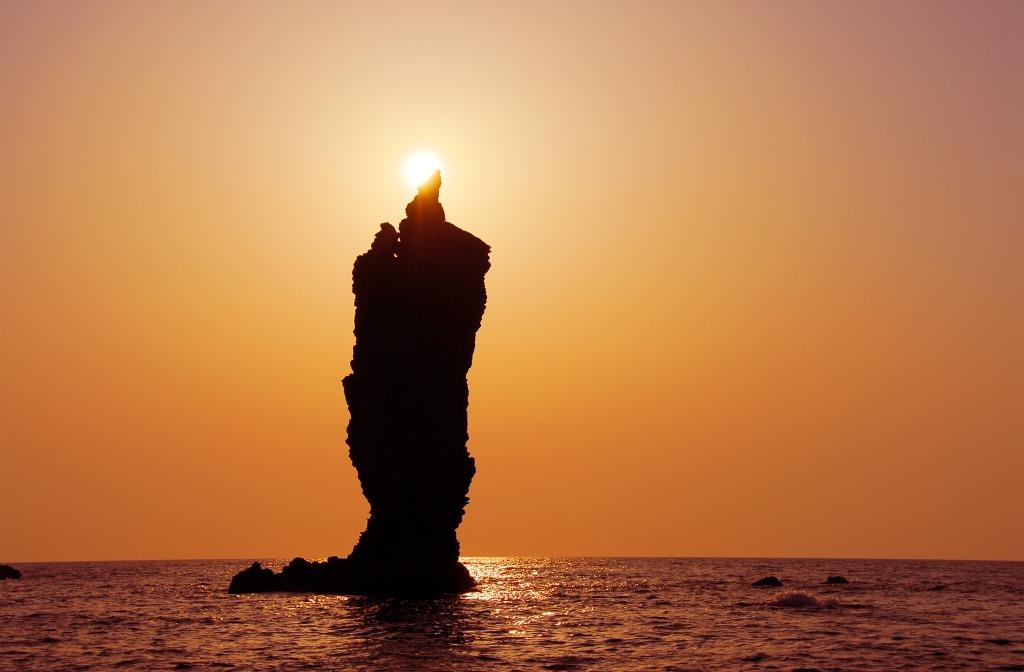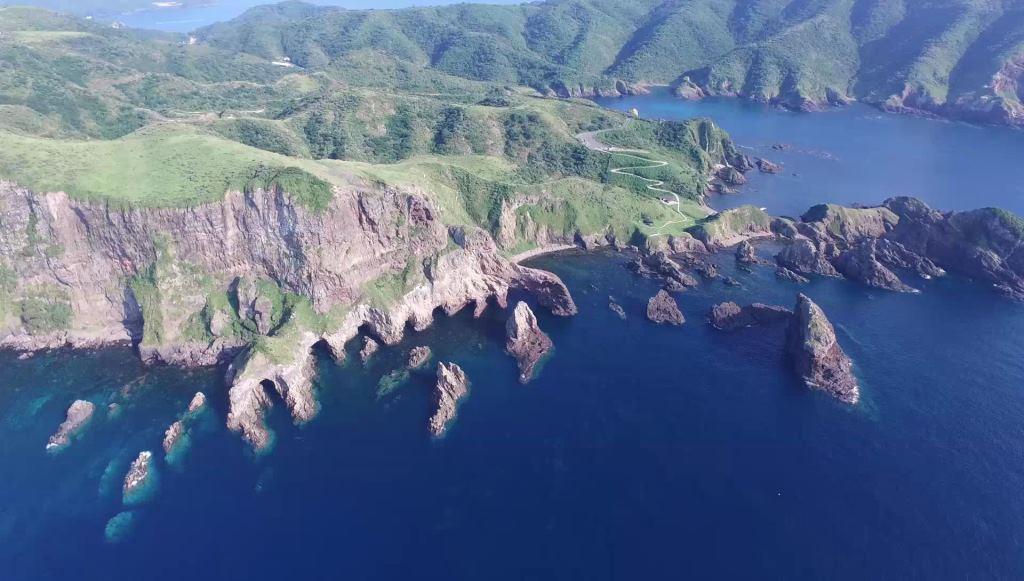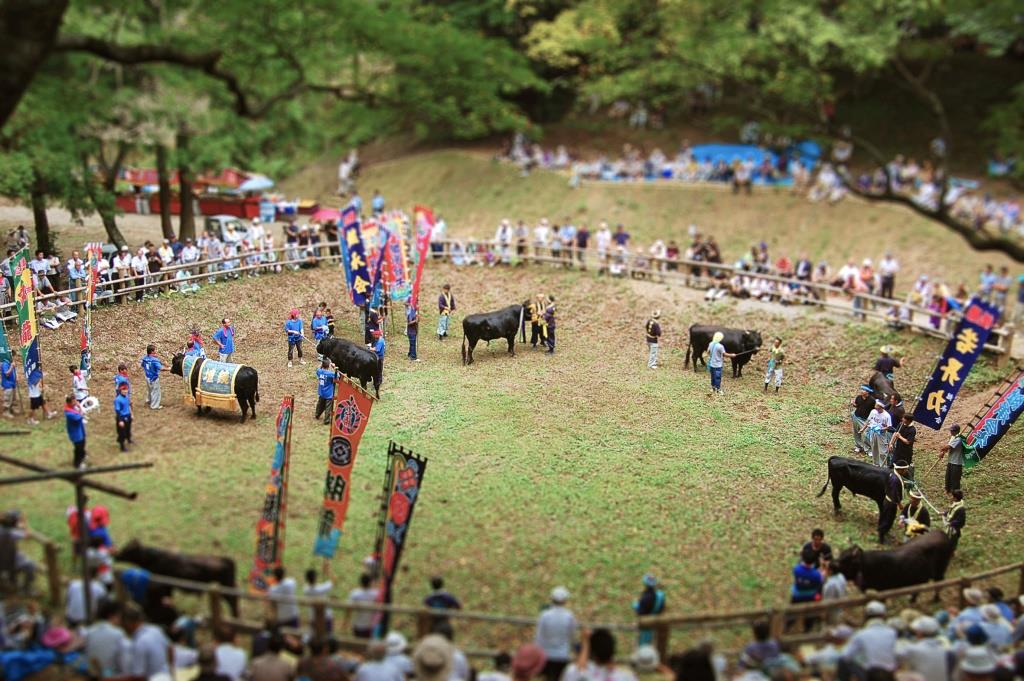
%c_location% Home > Members list
Oki Islands Geopark
The Oki Islands UNESCO Global Geopark encompasses four small inhabited islands and 180 uninhabited islets in the Sea of Japan. It contains over 100 geospots in an area of 673.5km2, including 1km of sea area from the coastline. Within this small, isolated area you can experience the intricate connections between geohistory, ecosystems, and culture.

Candle Island
The rocks on Oki tell the story of the breakup of the Eurasian continent and the formation of the Japanese Archipelago. Once, the islands were simply a piece of land connected to the Eurasian continent. Oki Gneiss, a 250-million-year-old rock type found on Oki demonstrates this continental origin. Plate tectonics gradually separated the land of the would-be Japanese Archipelago from the continent, creating the Sea of Japan. Fossils of aquatic species such as crocodiles, turtles, and carp uncovered in sedimentary rocks tell us that the land of Oki once lay at the bottom of this sea. The islands emerged from the sea around six-million years ago, brought to the surface by volcanic activity. The Dōzen Caldera, mantle xenoliths, and volcanic rocks like obsidian provide a glimpse into this formation period. Oki wouldn’t remain exclusively as islands though; changes in water levels during glacial ages caused Oki to connect back to mainland Japan several times. Since rising from the sea, the land has also been subject to erosion, giving birth to Oki’s dynamic eroded coastlines, which feature towering vertical stacks, massive sea cliffs, wave-cut beaches, and island-dotted inlets.

Tsūtenkyō Arch
.jpg)
Sekiheki (Red Cliff)
The Oki Islands are also home to a unique ecosystem of intermixed plant distributions and endemic species. The key to the development of this ecosystem lies in Oki’s geohistory. The physical isolation of the islands led to the emergence of endemic species such as the Oki Rabbit, Oki Dandelion, and the Oki Salamander. Additionally, during the periods of time Oki spent connected to mainland Japan, several species crossed over. Because of this, you can observe a mysterious blend of southern, northern, continental, and endemic plants coexisting together on the islands.
The physical isolation and natural resources of the Oki Islands have shaped the lifestyles and traditions of the people here. Human history on Oki began with the mining of the volcanic rock obsidian, which was transported throughout Japan. Ancient capitals of Kyoto and Nara recognized the islands for the bountiful seafood their fishing resources provided them with. Later, Oki would become known as a “land of exile” for nobles and emperors, and then as a port town for trading ships traversing the Sea of Japan. Preserved in Oki’s isolated environment, much of the culture and traditions introduced during periods of exchange have survived to this day in festivals and customs.

Oki Bull Sumo
This geopark illuminates the connections between geohistory, ecosystems, and culture, and narrates the history of the formation of the Japanese Archipelago and broader transformations of the earth.
Contact Information:
Oki Islands UNESCO Geopark Promotion Committee